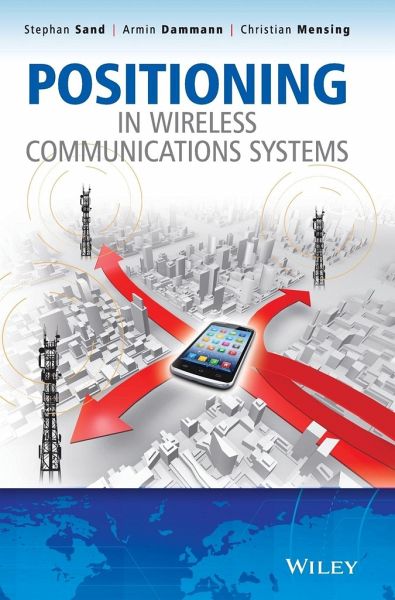
Positioning in Wireless Commun

PAYBACK Punkte
47 °P sammeln!
The availability of position information will play an increasingly important role in today's communication society. Providing a common overview of positioning in wireless networks for the first time, this innovative guide demonstrates the principal differences and similarities of wireless communications systems and navigation systems. Positioning in Wireless Communications Systems provides practicing engineers, DSP software engineers, lecturers, and students with scenarios that are critical for dedicated navigation systems, such as the Global Positioning System (GPS), and motivate the use of positioning based on terrestrial wireless communication systems.
Positioning in Wireless Communications Systems explains the principal differences and similarities of wireless communications systems and navigation systems. It discusses scenarios which are critical for dedicated navigation systems such as the Global Positioning System (GPS) and which motivate the use of positioning based on terrestrial wireless communication systems.
The book introduces approaches for determination of parameters which are dependent on the position of the mobile terminal and also discusses iterative algorithms to estimate and track the position of the mobile terminal. Models for radio propagation and user mobility are important for performance investigations and assessments using computer simulations. Thus, channel and mobility models are explored, especially focussing on critical navigation environments like urban or indoor scenarios.
Positioning in Wireless Communications Systems examines advanced algorithms such as hybrid data fusion of satellite navigation and positioning with wireless communications and cooperative positioning among mobile terminals.. The performance of the discussed positioning techniques are explored on the basis of already existing and operable terrestrial wireless communication systems such as GSM, UMTS, or LTE and it is shown how positioning issues are fixed in respective standards.
Written by industry experts working at the cutting edge of technological development, the authors are well placed to give an excellent view on this topic, enabling in-depth coverage of current developments.
Key features
Unique in its approach to dealing with a heterogeneous system approach, different cell structures and signal proposals for future communications systems
Covers hybrid positioning investigating how GNSS and wireless communications positioning complement each other
Applications and exploitation of positioning information are discussed to show the benefits of including this information in several parts of a wireless communications system
The book introduces approaches for determination of parameters which are dependent on the position of the mobile terminal and also discusses iterative algorithms to estimate and track the position of the mobile terminal. Models for radio propagation and user mobility are important for performance investigations and assessments using computer simulations. Thus, channel and mobility models are explored, especially focussing on critical navigation environments like urban or indoor scenarios.
Positioning in Wireless Communications Systems examines advanced algorithms such as hybrid data fusion of satellite navigation and positioning with wireless communications and cooperative positioning among mobile terminals.. The performance of the discussed positioning techniques are explored on the basis of already existing and operable terrestrial wireless communication systems such as GSM, UMTS, or LTE and it is shown how positioning issues are fixed in respective standards.
Written by industry experts working at the cutting edge of technological development, the authors are well placed to give an excellent view on this topic, enabling in-depth coverage of current developments.
Key features
Unique in its approach to dealing with a heterogeneous system approach, different cell structures and signal proposals for future communications systems
Covers hybrid positioning investigating how GNSS and wireless communications positioning complement each other
Applications and exploitation of positioning information are discussed to show the benefits of including this information in several parts of a wireless communications system














